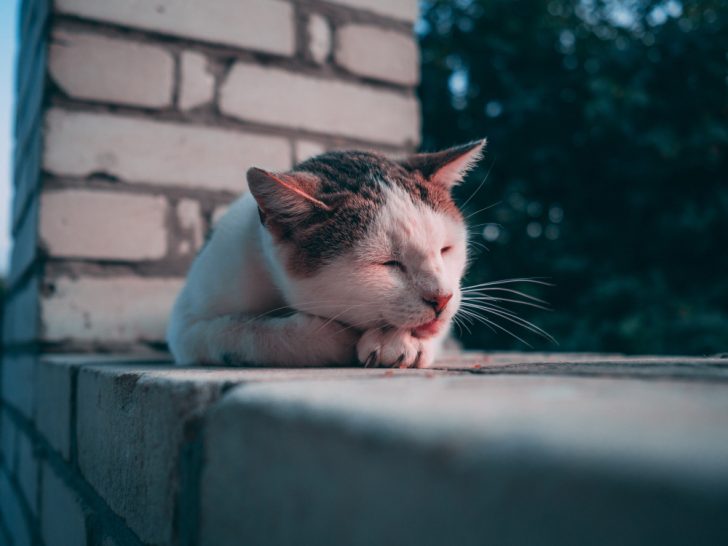Scrolling through #CatTok on TikTok shows cats gathering around concrete slabs as if they were rare treasures. Pet owners record delighted reactions, and experts share theories that go beyond the obvious.
Concrete gives cats a rough surface that suits their natural scratching urges. Those small grooves help sharpen claws without shredding indoor furniture. This roughness also doubles as a grooming tool, letting them rub their backs and flanks in a way softer materials can’t match.
Cats have scent glands in their faces and paws. Rubbing or scratching leaves pheromones behind, and concrete holds those scents well. The slab becomes a marked zone that feels safe, familiar, and unmistakably theirs.
A concrete slab left under the sun soaks up warmth. Cats, with naturally higher body temperatures, gravitate to that heated surface for quick snoozes. On cooler mornings, the retained heat makes an inviting spot that feels steady and dependable.

Freepik / When the temperature rises, concrete feels cool against fur. Cats lie flat on it, absorbing that relief through their bellies.
The steady coolness outperforms many indoor surfaces, which is why outdoor slabs see plenty of feline traffic in warm months.
Cats are known for sitting in boxes, baskets, and even drawn squares. A rectangular concrete slab creates clear edges that trigger the same response. It feels like a defined boundary, giving them comfort without walls or lids.
Cats are drawn to anything new, even something as simple as a concrete slab. In a yard they know well, it becomes a new spot to sniff, circle, and claim. That kind of low-key novelty keeps them curious and engaged—no extra toys needed.
The rough surface serves a second purpose, too. Many cats like to rub or roll on it, working out loose fur and giving their skin a little scratchy massage. Since it doesn't shift under their weight like grass or dirt, it gives them a sense of solid footing—something they seem to appreciate.
When more than one cat is around, they’ll often revisit the same spot. Rubbing against it leaves behind their scent, and over time, that scent builds up into a sort of communal marker. It’s not just a slab anymore—it’s shared territory.
Outdoor conditions shift fast with a bit of rain or wind, but concrete holds up well. It drains quickly and dries out evenly, so cats tend to gravitate back to it not long after a storm. Compared to soggy grass or soft, muddy soil, it just feels more reliable.
Even a slightly raised slab gives them an advantage. Those few inches of height let them scan their surroundings more easily, watching for birds, insects, or anything else that moves.
